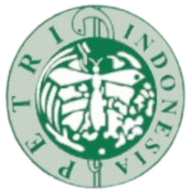Focus and Scope
covers the types of Original Article (Basic or Clinical), Consensus and Guideline, Review, Short Report & Case Report, etc. The journal focuses on the new developments in basic and clinical researches in the diagnosis and treatment of internal medicine. It aims to provide a platform of timely academic exchanges and information transmission for scientists and clinical experts in related fields around the world.
Areas covered include but not limited to: basic medical sciences and clinical medical sciences such as allergy and clinical immunology, endocrinology, metabolic disease, diabetes, tropical infection, rheumatology, geriatric, gastroenterohepatology, nephrology, hematology, oncology, pulmonology, cardiology, pshycosomatic
TSCM now indexed in:
- Google Scholar
- CrossReff
- Sci
- Scilit
- ISSN
- Ebsco
- Dimension
Section Policies
Articles
Peer Review Process
PEER REVIEW PROCESS
Articles submitted to The Sign of clinical medicine (SCM) will be evaluated through 2 stages of review, ie pre-review and substance review.
The pre-review of the article is carried out by the editorial team to review the conformity of the article with the focus and scope of the journal as well as the journal style and specific writing guidelines. Plagiarism checking is carried out by using Google Scholar and Turnitin software. Duration of review between 1-2 weeks.
Substantial single-blind reviews are performed by at least 2 reviewers. Duration of review between 3-8 weeks. If desired, the reviewer may request a re-review after the author revises his/her article.
Publication Frequency
The Sign of Clinical Medicine publishes four times in a year, January, April, July and October
Open Access Policy
This journal provides immediate open access to its content on the principle that making research freely available to the public supports a greater global exchange of knowledge.
Archiving
This journal utilizes the LOCKSS system to create a distributed archiving system among participating libraries and permits those libraries to create permanent archives of the journal for purposes of preservation and restoration. More...
The Sign of Clinical Medicine
The Sign of clinical medicine (SCM) is published by Internal Medicine Department, Faculty of Medicine Universitas Sebelas Maret. TSCM publishes original research articles, case report or article review in the basic medical sciences and clinical medical sciences such as allergy, clinical immunology, endocrinology, metabolic disease, diabetes, tropical infection, rheumatology, geriatric, gastroenterohepatology, nephrology, hematology, oncology, pulonology, cardiology, pshycosomatic
Publication Ethics
Publication Ethics and Malpractice Statement
The Sign of Clinical Medicine Journal is a peer-reviewed journal published by Sebelas Maret University. This statement clarifies the ethical behavior of all parties involved in the act of publishing an article in this journal, including the author, the chief editor, the Editorial Board, the peer-reviewer, and the publisher. This statement is based on COPE’s Best Practice Guidelines for Journal Editors.
Ethical Guideline for Journal Publication
The publication of an article in the peer-reviewed The Sign of Clinical Medicine Journal is an essential building block in the development of a coherent and respected network of knowledge. It is a direct reflection of the quality of the work of the authors and the institutions that support them. Peer-reviewed articles support and embody the scientific method. It is therefore important to agree upon standards of expected ethical behavior for all parties involved in the act of publishing: the author, the journal editor, the peer reviewer, the publisher, and the society.
Sebelas Maret University, as the publisher of The Sign of Clinical Medicine Journal, takes its duties of guardianship over all stages of publishing extremely seriously, and we recognize our ethical and other responsibilities. We are committed to ensuring that advertising, reprint, or other commercial revenue has no impact or influence on editorial decisions. In addition, Sebelas Maret University and the Editorial Board of The Sign of Clinical Medicine Journal will assist in communications with other journals and/or publishers where this is useful and necessary.
Publication Decisions
The editor of The Sign of Clinical Medicine Journal is responsible for deciding which of the articles submitted to the journal should be published. The validation of the work in question and its importance to researchers and readers must always drive such decisions. The editors may be guided by the policies of the journal's editorial board and constrained by such legal requirements as shall then be in force regarding libel, copyright infringement, and plagiarism. The editors may confer with other editors or reviewers when making this decision.
Fair play
An editor at any time evaluates manuscripts for their intellectual content without regard to race, gender, sexual orientation, religious belief, ethnic origin, citizenship, or political philosophy of the authors.
Confidentiality
The editor and any editorial staff must not disclose any information about a submitted manuscript to anyone other than the corresponding author, reviewers, potential reviewers, other editorial advisers, and the publisher, as appropriate.
Disclosure and conflicts of interest
Unpublished materials disclosed in a submitted manuscript must not be used in an editor's own research without the express written consent of the author.
Duties of Reviewers
- Contribution to Editorial Decisions: Peer review assists the editor in making editorial decisions. The editorial communications with the author also then assist the author in improving the paper based on the review results.
- Promptness: Any selected referee who feels unqualified to review the research reported in a manuscript or knows its prompt review will be impossible should notify the editor and excuse himself from the review process.
- Confidentiality: Any manuscripts received for review must be treated as confidential documents. They must not be shown to or discussed with others except as authorized by the editor.
- Standards of Objectivity: Reviews should be conducted objectively. Personal criticism of the author is inappropriate. Referees should express their views clearly with supporting arguments.
- Acknowledgment of Sources: Reviewers should identify relevant published work that has not been cited by the authors. Any statement that an observation, derivation, or argument had been previously reported should be accompanied by the relevant citation. A reviewer should also call to the editor's attention any substantial similarity or overlap between the manuscript under consideration and any other published paper of which they have personal knowledge.
- Disclosure and Conflict of Interest: Privileged information or ideas obtained through peer review must be kept confidential and not used for personal advantage. Reviewers should not consider manuscripts in which they have conflicts of interest resulting from competitive, collaborative, or other relationships or connections with any of the authors, companies, or institutions connected to the papers.
Duties of Authors
- Reporting standards: Authors of reports of original research should present an accurate account of the work performed and an objective discussion of its significance. Underlying data should be represented accurately in the paper. A paper should contain sufficient detail and references to permit others to replicate the work. Fraudulent or knowingly inaccurate statements constitute unethical behavior and are unacceptable.
- Data Access and Retention: Authors are asked to provide the raw data in connection with a paper for editorial review and should be prepared to provide public access to such data (consistent with the ALPSP-STM Statement on Data and Databases), if practicable, and should, in any event, be prepared to retain such data for a reasonable time after publication.
- Originality and Plagiarism: The authors should ensure that they have written entirely original works, and if the authors have used the work and/or words of others, that this has been appropriately cited or quoted.
- Multiple, Redundant, or Concurrent Publication: An author should not, in general, publish manuscripts describing essentially the same research in more than one journal or primary publication. Submitting the same manuscript to more than one journal concurrently constitutes unethical publishing behavior and is unacceptable.
- Acknowledgment of Sources: Proper acknowledgment of the work of others must always be given. Authors should cite publications that have influenced the nature of the reported work.
- Authorship of the Paper: Authorship should be limited to those who have contributed significantly to the conception, design, execution, or interpretation of the reported study. All those who have made significant contributions should be listed as co-authors. Where there are others who have participated in certain substantive aspects of the research project, they should be acknowledged or listed as contributors. The corresponding author should ensure that all appropriate co-authors and no inappropriate co-authors are included in the paper and that all co-authors have seen and approved the final version of the paper and have agreed to its submission for publication.
- Hazards and Human or Animal Subjects: If the work involves chemicals, procedures, or equipment with any unusual hazards inherent in their use, the author must clearly declare these in the manuscript. Authors should make it clear that experiments were conducted in a manner that avoided unnecessary discomfort to the animals/humans by the use of proper management and laboratory techniques. Methods of killing experimental animals must be described in the text. When describing surgical procedures, the type and dosage of the anesthetic agent must be specified. Manuscripts of original articles in human/animal research should be accompanied by their ethical clearance from their respective ethical committees.
- Disclosure and Conflicts of Interest: All authors should disclose in their manuscript any financial or other substantive conflict of interest that might be construed to influence the results or interpretation of their manuscript. All sources of financial support for the project should be disclosed.
- Fundamental errors in published works: When an author discovers a significant error or inaccuracy in his/her own published work, it is the author’s obligation to promptly notify the journal editor or publisher and cooperate with the editor to retract or correct the paper.
Screening Plagiarism
The Sign of Clinical Medicine Journal takes plagiarism, self-plagiarism, and AI-generated plagiarism seriously and applies a strict policy to safeguard the originality and integrity of all published work.
- Plagiarism Check
- All submitted manuscripts are screened using plagiarism detection software (e.g., Turnitin).
- The editorial team performs a similarity check twice: before the peer-review process and before final publication.
- The maximum acceptable similarity index is 20%. Manuscripts exceeding this threshold will be returned to the authors for correction and resubmission.
- Originality Requirement
- Authors must submit only original manuscripts that have not been published previously and are not under consideration for publication elsewhere.
- Any form of plagiarism, including uncredited use of others’ ideas, text, or data, is strictly prohibited and will result in rejection.
- Self-Plagiarism
- Authors must avoid redundant publication or extensive reuse of their previously published work.
- If parts of prior work must be reused, they should be properly cited and acknowledged.
- AI-Generated Plagiarism
- Authors must not use generative AI or AI-assisted tools to produce original ideas, data, figures, or substantial text for their manuscripts.
- Generative AI may only be used for language improvement and readability with full author oversight (see link: Declaration of Generative AI policy).
- The editorial team reserves the right to screen manuscripts for inappropriate or undisclosed AI-generated content.
- Consequences If plagiarism or self-plagiarism is detected during the review or after publication, the editorial board will take appropriate action, which may include:
- Rejection of the manuscript
- Retraction of the published article
- Notification to the authors’ institutions or funding bodies
The Sign of Clinical Medicine Journal upholds the highest standards of academic integrity and expects all authors to comply with ethical publishing practices. By submitting a manuscript, authors acknowledge that their work is original, free of plagiarism, and adheres to the principles of responsible research conduct.



